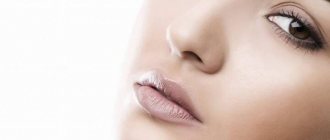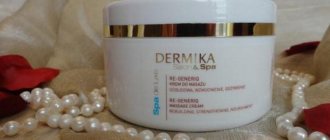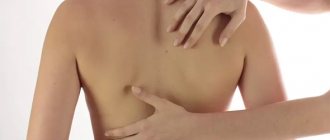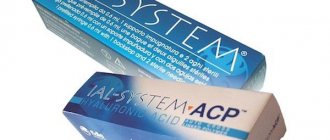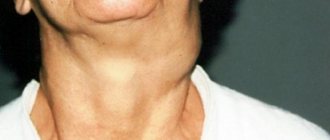Natalya Romanyutina, surgeon at the Art Clinic says:
“It will not be a secret that our eyes, like the mirror of the soul, are able to reveal a little of our inner world. Human facial expressions, especially in the eye area, will forever remain a miracle and a mystery to me. It seems so incredible to me that the precision of muscle contractions, elusive micro-movements that convey the unique, unique range of personal feelings and emotions inherent in each person. But, unfortunately, due to such complex functional and anatomical and physiological characteristics, the periorbital region is the most sensitive and the first to undergo age-related changes.”
These changes include loss of volume due to redistribution of the subcutaneous fat layer, progressive thinning of bone tissue, and decreased elasticity and skin tone.
There are also a number of negative factors that aggravate the inevitable age-related changes:
- chronic diseases
- hormonal and metabolic changes,
- smoking, alcohol, toxic drugs,
- psychological stress, depression,
- lack of sleep,
- chronic fatigue,
- working and living conditions,
- ultraviolet radiation,
- unbalanced diet,
- Heredity, gender, improper care of the area around the eyes, as well as constant exposure to gravity
Who is recommended for blepharoplasty?
If you are concerned about one of the problems listed below, then blepharoplasty will be the right way to solve them:
- sagging skin of the upper eyelid
- swelling caused by the presence of fatty deposits on the eyelids;
- bags under the eyes, tired appearance (fatty hernias);
- drooping corners of the eyes (sad look);
- excess skin in the lower eyelid area;
- deep wrinkles around the eyes;
- damage to the skin of the eyelids due to trauma and birth defects.
Medical examination
Before blepharoplasty, you must undergo a medical examination.
It will consist of several stages.
It all starts with a consultation with a plastic surgeon. There, a specialist will examine you, identify problem areas and collect a primary medical history.
You can sign up for a consultation with me by following the link.
Next, you will be sent for an examination consisting of:
- Laboratory tests of blood and urine.
- Electrocardiograms.
- Fluorographic examination of the lungs.
- Therapist consultations.
- Consultations with highly specialized doctors.
At what age is it recommended to have blepharoplasty?
Many patients ask this question. But there is no exact age period when this operation is necessary. Each person has his own special facial anatomy, unique facial expressions, his own genetic history, in the power of which he is. Everyone’s life develops differently, which means living conditions, occupational hazards, eating habits, sleep and rest, bad habits, and ultimately our state of mind. All these factors make noticeable adjustments to the appearance.
Some people at 50 years old do not feel any need to change anything in their appearance, while others at 35, once opening their eyes, cannot recognize their usual image in the reflection. There is a feeling that their changing face no longer matches their inner sense of self, disharmony arises.
Therefore, the indication for blepharoplasty is not the numbers in the passport, but an internal feeling of discomfort and objective anatomical changes requiring correction.
Contraindications to upper blepharoplasty
Contraindications to blepharoplasty include only serious systemic diseases:
- Oncology;
- Diseases of the cardiovascular system;
- Impaired liver and kidney function;
- Poor blood clotting.
As for eye diseases, almost none of them are considered contraindications to surgery. The exception is inflammatory diseases such as conjunctivitis. It is worth noting that a temporary contraindication for surgery is any inflammatory process in the body.
Will the stitches be visible after the surgery?
Almost all patients, when coming for a consultation, are worried and ask questions about postoperative scars. Indeed, I would like to keep any interventions on the face secret, and not have noticeable traces of the operation.
Fortunately, the skin in the area of the upper and lower eyelids, due to its structure, is favorable in terms of regeneration. The incisions are made in the area of natural folds; with care and the use of cosmetic sutures, after a few months the postoperative scars become barely or completely invisible. The main thing is to follow all the surgeon’s recommendations and protect the delicate area from the sun and other injuries.
How is the operation performed?
A plastic surgeon can perform blepharoplasty in two ways - using a laser or classically (using a scalpel). Both of these methods have the same number of advantages. Laser surgery does not imply the complete absence of bruises, swelling and postoperative stitches. If an operation was performed on the body, especially with the removal of excess tissue, then there will be stitches, swelling and bruises regardless of how it was performed.
Laser is considered a new, more convenient way to perform surgery. For the surgeon, it is of great importance whether the operation is performed with a laser or scalpel. The patient will not notice any difference if blepharoplasty was performed by a competent and qualified surgical team.
The operation is performed under local (very rarely general) anesthesia with intravenous sedation. The incision during upper blepharoplasty runs along the natural crease of the eyelid, so those faint scars that the operation will leave behind will be additionally hidden. In order for anyone to be able to see these scars, they need to be specifically demonstrated.
When performing blepharoplasty, the doctor performs the following manipulations (one or all):
- Excision of excess skin (a small oval-shaped area is removed);
- Plastic surgery of the eyelid muscles. It involves either partial displacement of the muscle to the upper position, or excision of its excess;
- Removal of excess fatty tissue.
The duration of upper blepharoplasty is 1-2 hours.
Recovery period after surgery
The recovery period is individual and largely depends on the general health of the patient, on the patient’s correct implementation of all prescriptions and recommendations.
However, the main temporary postoperative changes can be identified: the presence of swelling, bruising, irritation in the eyes, dryness or lacrimation, which are well controlled by drugs prescribed during this period.
Most patients begin work within 7-10 days after the operation, when the stitches and special stickers are removed, swelling and titmouse become invisible, most patients' mood and self-esteem improve, the look ceases to be tired and takes on a fresher and more youthful appearance.
Many appear in public places after two weeks, feeling quite comfortable. However, the complete healing process and the final result take several months. The surgeon will give you the necessary instructions on how to behave during this period of time.
Rehabilitation period
The postoperative period is short and usually takes no more than two weeks.
The sutures are removed within 3-5 days. After 7-8 days, you can use cosmetics. After surgery, physical activity is contraindicated for 2-3 weeks; a protective regime is recommended. If there are special indications, the patient may be prescribed physiotherapeutic treatment to speed up recovery.
The eyelid area is characterized by a favorable course of scarring processes, so you don’t have to worry about marks after surgery.
After complete healing, the patient has the opportunity to evaluate the final result of the operation. High-quality blepharoplasty gives a lasting effect, and therefore you don’t have to think about repeat surgery until after 10 years.
Rehabilitation
The recovery period after lower eyelid surgery is quite short, it lasts no more than 3 weeks. If you follow all the recommendations of your doctor, the tissue will be restored painlessly and quickly.
In the first week it is important:
- do not disturb the seams, and if you touch your eyes, do so only with disinfected fingers;
- apply cold compresses;
- give up makeup;
- wear sunglasses.
It is better to postpone visits to the solarium, swimming pool, and gym for 2 months. Even carrying heavy bags from the grocery store is contraindicated.
Elimination of drooping (ptosis) of the upper eyelid - eyelid lift surgery
A more complex situation than just a drooping upper eyelid or even an Asian eyelid is true drooping eyelid (ptosis). Ptosis can be unilateral (in which case there is asymmetry of the upper eyelids) or bilateral, congenital or acquired (as a result of infectious, neurological or autoimmune diseases). Eyelid (or eyelid) lift surgery involves shortening the muscle that lifts the upper eyelid (levator muscle). While the task is to lift the eyelids just a couple of millimeters, the operation to perform it is not easy and requires a lot of experience.
Blepharoplasty: prices and reviews
The cost of the operation depends on the scope of correction and the qualifications of the plastic surgeon. Our clinic also has profitable promotions, you can find them in this section
. The cost of lower/upper eyelid blepharoplasty already includes: surgery, anesthesia, stay in the ward, postoperative patient care (examination by a surgeon, dressings and suture removal), consultation with a cosmetologist and one procedure of hardware lymphatic drainage massage
view reviews of blepharoplasty at the Pirogov Clinic
(St. Petersburg) in the corresponding section on our website.
Lower eyelid blepharoplasty
During classic blepharoplasty, the surgeon makes an incision under the eyelash line. Its task is to eliminate excess skin and remove hernias, which create the effect of puffy eyes.
If there is no excess skin, a minimally invasive operation is performed to remove the bags - the so-called transconjunctival blepharoplasty without external incisions. An incision is made on the inside of the eye, through which the fat sac will be removed. The advantage of transconjunctival blepharoplasty is the absence of a visible scar on the face after healing.
Lower eyelid blepharoplasty at Platinental is performed differently. As a rule, simultaneously with a low-traumatic cheek lift. This technique is called Cheek lift light.
Circumferential blepharoplasty and endoscopic midface lift. Done by Andrey Iskornev.
Cheek lift techniques are varied.
- you can fill the area of the cheekbones and mid-face with your own fat (do lipofilling),
- You can lift the overhanging area of the cheekbone with the absorbable Endotine device. Endotins in plastic surgery are also called biological face lifting, since endotin is absorbed 5-6 months after injection, but the tissue continues to be stretched.
In this case, no additional incisions are required - the entire procedure is carried out through an incision in the eyelash edge.
No other eye blepharoplasty gives such a result! Just imagine. Your new face without nasolacrimal grooves, the protruding contours of the eye sockets (the transition between the lower eyelid and cheek) are smoothed, the nasolabial folds magically disappear, the cheekbones return to the top and are filled with youthful volume. Your face glows with youth!
Laser blepharoplasty: young eyes should look wrinkle-free!
Contrary to popular myths, it is impossible to eliminate crow's feet using classic blepharoplasty.
For radical eye rejuvenation, we at Platinental combine surgery with light fractional laser eyelid peeling. Carbon dioxide laser allows you to make the skin more elastic after surgery, erase the relief of fine wrinkles and improve its color, especially for those who suffer from dark circles under the eyes.
Resurfacing is performed in the clinic simultaneously with the operation under TIVA anesthesia, so pain is excluded.
The trust of celebrity patients is one of the best proofs of the “couture” level of skill
Let’s not hide that Platinental surgeons trust their eyes to celebrities and politicians.
We are somehow accustomed to the fact that all stars undergo plastic surgery. But we rarely think that they are not only the most demanding patients. They are also the busiest. Their filming and touring schedule is planned 3-5 years in advance .
Due to lack of time and the nature of the profession, such patients always make 2 strict demands:
- the operation should take place without complications and have the shortest possible recovery period,
- the operation must provide a long-term result and be done as rarely as possible, because forced downtime can easily ruin a career.
And the stars of politics and business present one more thing.
They are not eager to make public the fact of the anti-aging procedures performed. Therefore, the operations that we perform at Platinental provide the most natural result without the effect of an operated face. Everything looks as if the person began to lead a healthy lifestyle and gets enough sleep regularly .
We are pleased to offer all these technologies to you.
Iskornev Andrey, plastic surgeon.
Eyes are the main factor of attractiveness. They determine how sociable you are, what mood you are in, what mood you are in, whether you are flirtatious or strict, analytical or, conversely, prone to adventurism.
The harmony of the eyes, like all facial features, has its own rules, but the degree of “deviation” from the conventional norm can be much greater than with the shape of the lips, nose or chin.
Despite this, there are strict rules:
— The contour of the lower eyelid should touch the lower border of the iris, otherwise the eyes look round, “fishy”, this is how the eyelid of an elderly person looks. That is why lower eyelid blepharoplasty is a special science, and only a few surgeons are concerned about the stability of the eyelid shape after such an operation.
Regular and fisheye
— The outer corner of the eye should be 2-3mm higher than the inner one. This creates the effect of an almond-shaped eyelid, which on a woman’s face emphasizes the artistry and sexuality of nature.
Regular and almond-shaped eyes
- There should be a small roll of muscle under the lower eyelid (pretarsal roll of the lower eyelid). This should definitely be taken into account when planning lower eyelid blepharoplasty. The surgeon must be able to model this roll of muscle to highlight the youthful shape of the eyelid and the natural result of rejuvenation.”
The pretarsal ridge of the lower eyelid on Kate Middleton, Emma Watts and the model from the Christian Dior show certainly speaks of their youth.
Restrictions
A number of restrictions and prohibitions appear already at the testing stage. This is due to the fact that the body must be fully prepared for surgery.
- A tan
Two months after the operation, you need to stop visiting the solarium and limit your exposure to direct sunlight.
- Cigarettes
Let me remind you that nicotine is an active vasoconstrictor. This means it significantly impairs tissue healing.
Of course, ideally you need to quit smoking. But you and I know how difficult it is. Therefore, it is necessary to stop smoking at least two weeks before surgery. And they will abstain from cigarettes afterwards.
- Alcohol
Alcohol is another enemy of regeneration. It is toxic to the body. It disrupts metabolic processes, reduces blood clotting and can cause vasospasm.
Therefore, alcohol consumption is strictly prohibited two weeks before surgery. Anyone. Both strong and low alcohol drinks. Since the adverse effect from them is the same.
- Cosmetical tools
A few days before the procedure, you must stop using cosmetics that affect the condition of the eyelid skin.
In some cases, your doctor may recommend stopping the use of perfumes and deodorants.
- Exercise stress
Before surgery, there are no prohibitions or restrictions in terms of physical activity, unless there is a medical reason for it.
However, the day before the operation must be spent at rest. Physical activity can increase blood flow to tissues. This may cause bleeding during or after blepharoplasty.
- Medicines
Some medications affect blood clotting. For example, non-steroidal anti-inflammatory drugs - aspirin, paracetamol, ibuprofen.
Tell your surgeon absolutely about all the medications you are taking. The doctor will tell you which ones you can continue to drink. And it will indicate those whose course will have to be interrupted.
- Nutrition
There are limitations here too. Before blepharoplasty you will have to refrain from consuming:
- Citrus
- chocolate
- Other confectionery products containing cocoa
- Fatty foods
- Spicy food
- Strong coffee
- Smoked meats.
You need to reduce the amount of carbohydrates you consume. Preference should be given to boiled or steamed food.
You should not have breakfast on the morning of surgery.
Complications and side effects
Not a single surgical intervention is complete without the appearance of hematomas and swelling. But this is no reason to panic. This phenomenon is just a reaction of the delicate skin of the eyelids. Typically, bruising and swelling completely disappear within 2 weeks after blepharoplasty. However, it is possible that more unpleasant effects may occur. These include:
- inflammation of the sutures due to infection;
- long periods of disappearance of hematomas, which are a consequence of extensive damage to blood vessels;
- the appearance of keloid scars;
- inversion of the lower eyelid due to the removal of a large amount of tissue;
- the occurrence of compactions due to incorrectly applied seams;
- headache and eye pain;
- bleeding;
- cyst;
- displacement of lacrimal openings;
- dry eye syndrome;
- seam divergence;
- asymmetry of the eyes and unplanned changes in their shape.
Analyzes
All studies are aimed at identifying pathologies that prevent blepharoplasty. And also to study your body in order to reduce the risk of complications.
Before surgery, the patient undergoes the following tests:
- Clinical urine analysis
- Blood coagulogram
Blood clotting indicators
- Analysis to determine blood group and Rh factor
Mandatory before any operation.
- Clinical blood test
On the number of leukocytes, hemoglobin and erythrocyte sedimentation rate.
- HIV test
- Analysis for viral hepatitis B and C
- Wasserman reaction
Detects syphilis.
If the tests are in order, the patient visits a therapist and specialists (for example, an ophthalmologist). And then the date of the operation is set.


